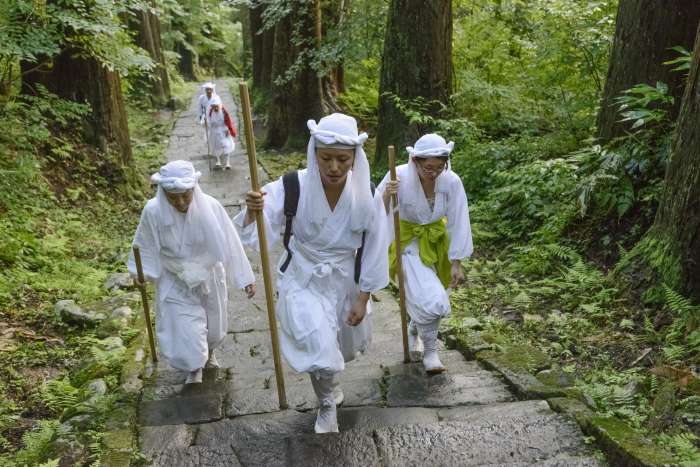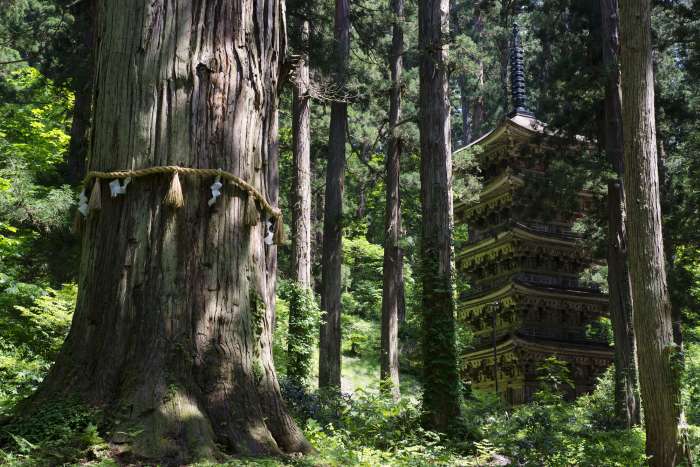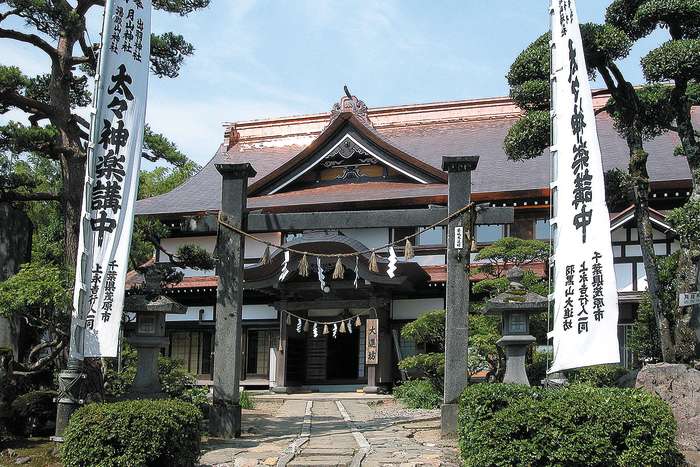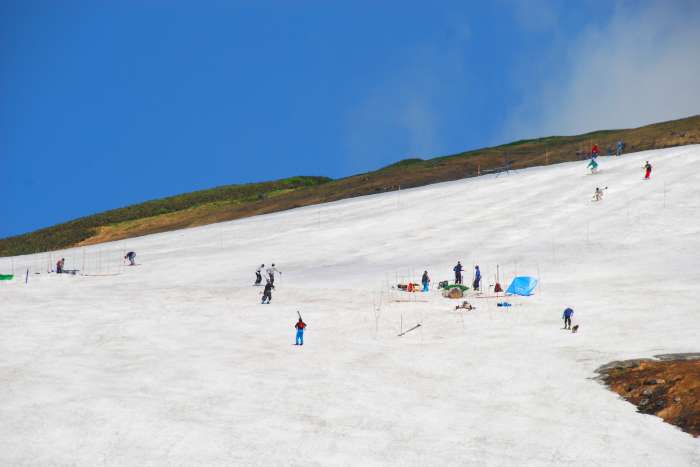
Story
Experience the Journey of Rebirth at Dewa Sanzan
Go on a Spiritual Pilgrimage at Yamagata Prefecture
By JNTO on 29 June 2022
The Dewa Sanzan or the Three Holy Mountains of Dewa is situated near the Sea of Japan in Yamagata Prefecture, consisting of Mount Haguro, Mount Gassan and Mount Yudono that represent birth, death and rebirth respectively.
The trek through these three mountains is symbolic of going through the cycle of rebirth and is often done by yamabushi, Japanese mountain monks who are Shugendo practitioners and live as ascetic monks.

The Dewa Sanzan stuns with its beauty through all seasons, and one of the most popular times to visit is the beginning of July to mid-October. July marks the start of summer, which is perfect for what the Japanese people call shinrin-yoku or forest bathing, where one immerses themself in nature as a form of mental recuperation.

From mid-September to mid-October, the blaze of crimson of the autumn foliage at Mount Gassan, the tallest mountain of the Dewa Sanzan, becomes a sight to behold.
Uncover more of what is in store for the curious traveller at each mountain of the Dewa Sanzan.
Mount Haguro
Mount Haguro, which stands at 414 metres, is open all year round and is friendly to climb even for beginner hikers. The hike to the top, which measures 1.7km long, will treat you to some notable sights.

These include tall cedar trees with shrines dotted around them believed to house the deities dwelling in these mountains; a five-storey pagoda that is a designated National Treasure of Japan, and even a yamabushi who might be meditating while standing beneath a waterfall as part of their training.

At Mount Haguro’s peak are its main shrine and its many temple lodges, known as shukubo. Daishinbo, in particular, is open to hosting international travellers.

You may opt to stay overnight and experience the life of a monk here; waking up early for a morning prayer ceremony, and savouring shojin ryori, a vegetarian meal eaten by Buddhist monks.
Mount Gassan
Mount Gassan, which has the highest point of the Dewa Sanzan at 1984 metres, is the second mountain visited during a pilgrimage hike at the sacred trail. Due to the region’s heavy snowfall, the Gassan Pair Lift at Gassan Skii Resort opens only from April to October.

April to July is a great time for snow enthusiasts to partake in Gassan Summer Skiing. In the warm climate, enjoy invigorating skiing and snowboarding amidst the contrast of blue skies, white snow, and new greenery of spring. From July to mid-September, the hiking trail to the summit is filled with blooming alpine flowers. Brilliant Autumn colours cover the entire mountain range in robust orange from mid-September to early October.

The shrine sitting at Mount Gassan’s peak that worships the god of the moon, Tsukuyomi no Mikoto, opens from the start of July to the end of August. Many fishermen and farmers visit during this period as the god of the moon is known to bless pilgrims with abundant crops in the region.
Mount Yudono
Mount Yudono is the last stop in the journey of rebirth at the Dewa Sanzan. Open for visitation from June till the end of October, it is considered the most sacred mountain among the three.
Strict rules apply when one visits its grounds — no shoes are allowed when passing through the shrine gates, photography and videography are strictly prohibited, and talking about anything that a visitor sees while walking about its grounds is forbidden.
The shrine here differs from Mount Haguro and Gassan, in that there is no main shrine building but is an inner sanctum, and is opened from the start of June to early October. The revered beauty of Mount Yudono sparked a strong emotional response within Matsuo Basho, Japan’s most famous poet during the Edo period (1603 - 1868), inspiring him to pen a haiku. Visitors intrigued by what Basho experienced may have to visit the area for themselves.
Zuishinmon Gate: The start of the Dewa Sanzan trail
Address: Haguromachi Touge, Tsuruoka, Yamagata 997-0211, Japan
Access: From Shonai Airport, ride the bus to JR Tsuruoka station, then take another bus to Zuishinmon gate.
Daishinbo
Address: Touge-95 Haguromachi Touge, Tsuruoka, Yamagata 997-0211, Japan
Website: Daishinbo (Japanese Only)
Access: From Shonai Airport, ride the bus to JR Tsuruoka station, then take another bus to Mount Haguro, which takes approximately 90 minutes.
















































